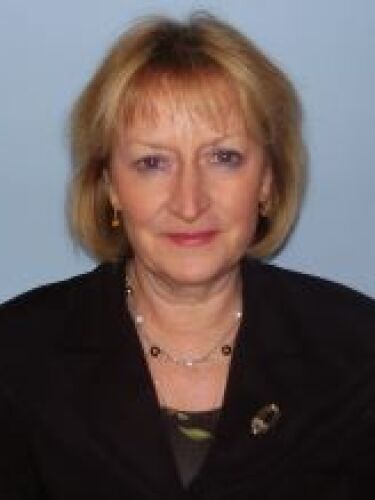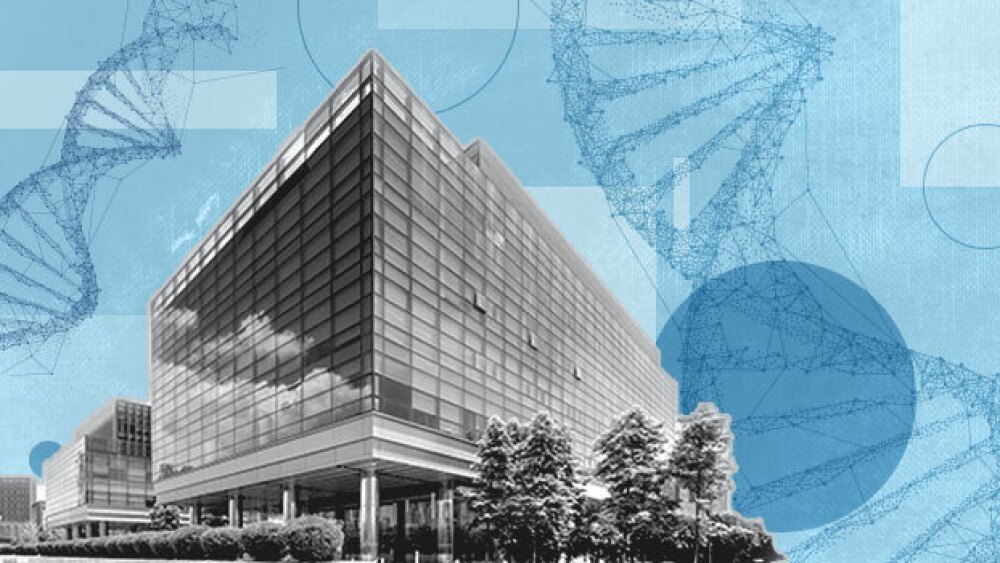Tuesday, the FDA approved Qalsody—formerly tofersen—on a conditional basis to treat SOD1-ALS.
Pictured: A Biogen sign in front of a building/courtesy of John Tlumacki/The Boston Globe via Getty
Update (May 2):
Biogen’s ALS drug, Qalsody, will cost $14,230 per vial, a company spokesperson confirmed to BioSpace.
Before reaching this price, Biogen considered “the value [Qalsody] provides patients and their caregivers based on the treatment effect demonstrated in clinical trials, the value of breakthrough approaches to genetic diseases with no treatment options, and the need to incentivize innovation for small patient populations that might otherwise be overlooked,” Chris Leibman, senior vice president, Value, Access, Public Policy and Government Affairs at Biogen, told BioSpace in an e-mail.
Update (May 2):
Biogen’s Qalsody will cost $14,230 per dose, a company spokesperson told Endpoints News on Monday.
Qalsody—formerly tofersen—was approved April 25 under the FDA’s accelerated approval pathway to treat the 2% of ALS patients whose disease is caused by a mutation in the superoxide dismutase 1 (SOD1) gene.
This price point makes Qalsody more expensive than Amylyx’s Relyvrio, approved to treat sporadic ALS in September 2022. Fourteen doses per year would place Qalsody at $199,200, the Biogen representative told Endpoints. This compares to Relyvrio’s price tag of $158,000 per year. The intravenous version of Mitsubishi Tanabe’s edaravone costs up to $169,000 per year.
Update (April 25):
Tuesday, the FDA handed Biogen, Ionis and particularly superoxide dismutase 1 (SOD1)-ALS patients a victory with the approval of Qalsody—formerly known as tofersen—as just the fourth therapy authorized in the U.S. for the devastating neurodegenerative disease.
The FDA approved Qalsody on a conditional basis under its accelerated approval pathway and will require Biogen to run an additional trial of patients who carry the SOD1 mutation but are not yet symptomatic.
Biogen won approval based on tofersen’s effect on neurofilament light chain (NfL), adding credibility to the neurodegenerative biomarker and establishing a path likely to be taken by other companies developing treatments for ALS.
In briefing documents released ahead of the FDA’s March advisory committee meeting on Biogen and Ionis’ tofersen, the agency called superoxide dismutase 1 (SOD1)-ALS “a very rare and devastating disease” and indicated the agency’s willingness to exercise regulatory flexibility. While supporting accelerated approval for tofersen, the FDA’s advisors voted 5-3, with one abstention, against traditional approval.
On Tuesday, Biogen, Ionis and the ALS community will find out whether tofersen will become the fourth FDA-approved ALS therapy.
In September 2022, Amylyx’s Relyvrio (AMX0035) became the third. Relyvrio’s approval was based on one randomized, controlled trial and came after the FDA’s Peripheral and Central Nervous System Drugs Advisory Committee initially voted against the drug in March 2022.
In a highly unusual second adcomm, spurred in part by a patient-driven email campaign, the advisers were convinced by confirmatory evidence from a post hoc analysis of data from the Phase II CENTAUR trial and open-label extension study.
Patient advocacy has also featured in tofersen’s story. The drug became a national name when Lisa Stockman Mauriello sought early access through the Right to Try Act in March 2021.
But there are also key differences between the two therapies.
Relyvrio is a proprietary combination of sodium phenylbutyrate and taurursodiol intended to reduce neuronal death and dysfunction. Tofersen, on the other hand, specifically aims to reduce production of the SOD1 protein, which is highly expressed in motor neurons. The underlying SOD1 gene is mutated in up to 20% of familial cases of ALS and 2% of all cases.
If approved, tofersen would be the first drug to treat a genetic form of ALS.
Burden of Proof
In June 2022, the FDA unveiled its Action Plan for Rare Neurodegenerative Diseases, Including ALS, which aims to “facilitate patient access to novel treatments,” among other things. A key tenet of this plan is the development of predictive and prognostic biomarkers for ALS.
Biogen is seeking approval based primarily on a biomarker that is quickly gaining traction in ALS—neurofilament light chain (NfL). In March, FDA advisors voted 9-0 that tofersen’s effect on NfL could be a reasonable predictor of clinical benefit.
“We don’t have anything that’s done anything like that,” Merit Cudkowicz, chief of the neurology department at Massachusetts General Hospital and co-principal investigator of the VALOR study, told BioSpace of tofersen’s effect on NfL.
Tofersen’s Phase III VALOR study—comprising 108 patients—failed to meet the primary endpoint of a statistically significant change from baseline to week 28 on the Revised Amyotrophic Lateral Sclerosis Functional Rating Scale (ALSFRS-R). The ALSFRS-R—a 48-point scale where higher scores indicate better function—is the gold standard of measurement for ALS therapies.
In September 2022, Biogen published combined analyses of 12-month VALOR data and the accompanying open-label extension study, which collectively showed that earlier initiation of tofersen slowed decline in function and strength in SOD1-ALS patients. At 52 weeks, the change in ALSFRS-R score was a loss of 6 points in the early-start cohort compared with 9.5 points in the delayed-start cohort.
While tofersen and Relyvrio were both small studies, they both were “going in the right direction of slowing down the illness,” Cudkowicz said. The difference, she said, is that tofersen goes right to the cause of the disease. “Because of that, I think we saw that huge drop in the neurofilament and also some delayed but real improvement in strength.”
University of Sheffield Professor Dame Pam Shaw, director of the Sheffield Institute for Translational Neuroscience and European chief investigator for VALOR, concurred, saying she saw “really graphic examples of improvement in muscle strength,” which she hasn’t seen in any other trial. One patient reported being able to climb the garden steps—something they hadn’t been able to do for two years.
While VALOR did not meet its primary endpoint at six months, the clinical indicators were there by 12 months, Shaw said. “I think it’s taught us that you have to be a bit more patient to see the significant clinical changes.”
Cudkowicz had hoped the FDA’s advisors would support traditional approval for tofersen due to the rarity of the patient population. “It’s really not feasible to do another study in symptomatic SOD1 [ALS]. It wasn’t easy to find 100 patients for that Phase III trial,” she said.
Shaw added that she believes regulators have sympathy for ALS patients but also want to see robust data. “I think the data from the tofersen trials is very robust if you don’t get hung up on the primary endpoints.”
When approached for comment on the regulatory process, Ionis deferred to Biogen. BioSpace has reached out to Biogen and will update this story accordingly.
Heather McKenzie is a senior editor at BioSpace, focusing on neuroscience, oncology and gene therapy. You can reach her at heather.mckenzie@biospace.com. Follow her on LinkedIn: https://www.linkedin.com/in/heathermmckenzie/ and Twitter: @chicat08
Correction (April 25): This story has been updated from its original version to correctly state that Relyvrio did not miss its p-value endpoint. BioSpace regrets the error.








